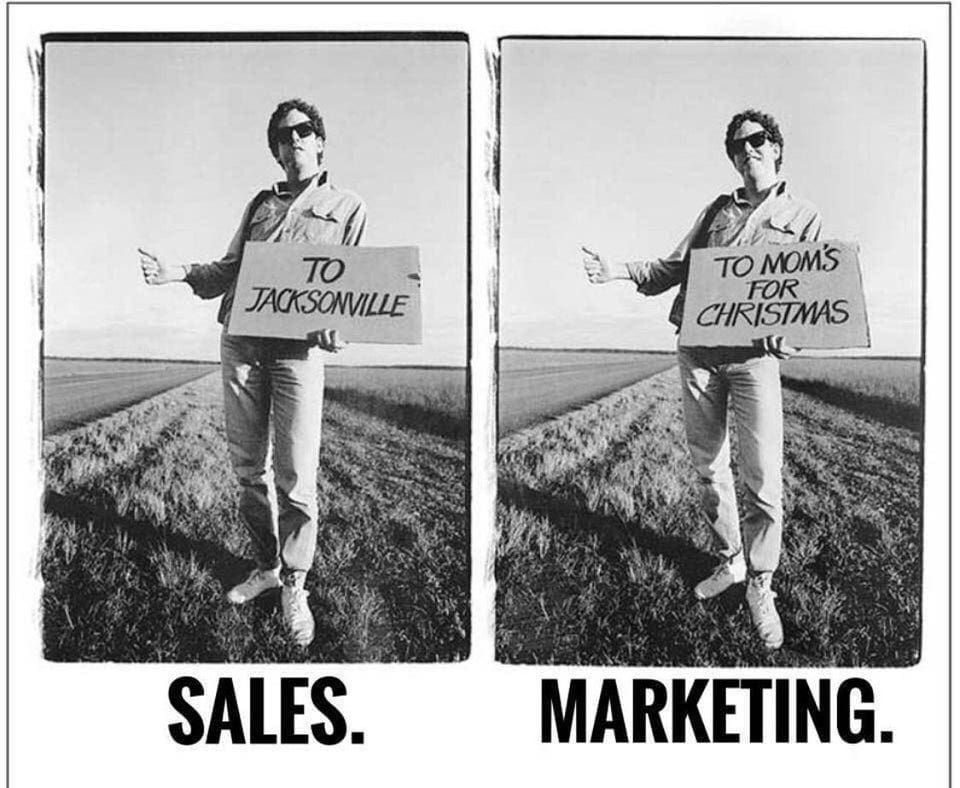
- SEO Strategy, Lead Generation
Recent articles
our mailing list
B2B Marketing and Sales Alignment: The Key to Performance

In the realm of B2B marketing, a pervasive challenge looms – the misalignment between marketing and sales. For effective pipeline generation, it’s crucial that marketing and sales are on the same page, targeting the same audience. However, recent research reveals that this overlap, even between brand and demand marketing, is shockingly minimal.

Understanding the Sales and Marketing Misalignment
Before we explore the benefits of alignment, it’s crucial to recognize the existing issue of sales and marketing misalignment. Research shows that, on average, the overlap between these two crucial departments is a mere 16%. This lack of synchrony can hinder performance and diminish the efficiency of your B2B marketing sales funnel.
The Ideal Scenario: Perfect Alignment
Imagine a scenario where B2B marketing and sales alignment is optimal. This alignment can result in a significant performance boost, as exemplified by data revealing that when sales reaches out to buyers who have been exposed to marketing within the last 30 days, response rates skyrocket.
How Marketing Can Help Sales
When marketing and sales work together seamlessly, it creates an ideal environment for sales and marketing alignment. This collaboration leads to increased response rates, making it easier for sales teams to engage with potential buyers effectively.
The Impact of Alignment on the Average B2B Sales Cycle
One aspect that greatly benefits from sales and marketing alignment is the average B2B sales cycle. With improved coordination, the sales cycle can become more efficient, allowing for quicker conversions and shorter time-to-revenue.
Boosting Performance Through Alignment
The key takeaway is clear: aligning B2B marketing and B2B sales has the power to boost performance significantly. This alignment can increase marketing-generated revenue by up to 208%, enhance customer retention by 36%, and reduce overall sales and marketing expenses.
Strategies for Achieving Sales and Marketing Alignment
Now that we understand the significance of alignment, it’s essential to consider how to achieve it. Two essential strategies come to the forefront:
- Strategic Audience Alignment: Sales and marketing should align their targeting efforts to ensure they’re pursuing the same audience. This involves senior leaders from both departments engaging in strategic conversations to determine the ideal audience, followed by effective execution.
- Broadening Marketing Targeting: Hyper-targeting can hinder alignment. Embracing broader targeting strategies can lead to more overlap, benefiting both sales and marketing departments.
- Regular Communication: Foster open and frequent communication between sales and marketing teams to ensure everyone is on the same page regarding goals, challenges, and progress.
- Shared Goals and Metrics: Define shared key performance indicators (KPIs) and goals that both teams can work toward. For example, they can jointly aim for a specific revenue target or lead conversion rate.
- Sales Enablement: Provide sales teams with the necessary content and resources generated by marketing to help them engage with leads effectively. This might include sales collateral, educational materials, and training programs.
- Feedback Loops: Establish feedback mechanisms for sales to provide insights and data on lead quality and customer interactions. Marketing can then use this information to refine their strategies.
If you’re looking to enhance B2B performance, it’s imperative to prioritise sales and marketing alignment. By applying this to your digital marketing strategy, you can capitalise on increased response rates, expedite the sales cycle, and ultimately enjoy the benefits of a more efficient and profitable B2B operation.







